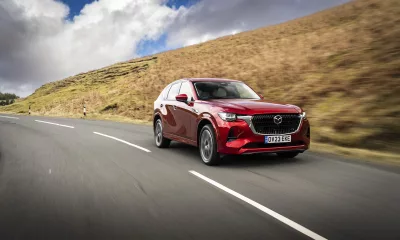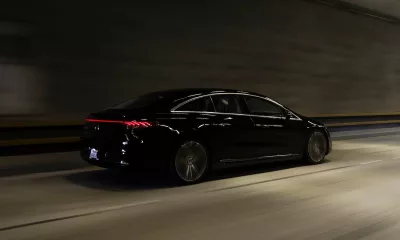JOHANNESBURG, Gauteng – A 2 000 km road trip provides a wonderful opportunity to learn more about a given vehicle. That’s exactly what we did with the updated Toyota Land Cruiser Prado.
What’s new?
The most significant change is the drivetrain. The update of the 2,8-litre, four-cylinder turbodiesel we’ve seen on the Hilux and Fortuner has now been implemented on the Prado. The result is a gain of 30 kW and no less than 100 N.m of torque compared with the old 3,0-litre unit. Endowed with 150 kW and 500 N.m, there’s an obvious improvement in the SUV’s acceleration. While 0-100 km/h times aren’t typically all that important for such a vehicle, the extra oomph is certainly welcome since the Prado is a weighty thing. Inside, the infotainment system has been updated, now featuring a larger nine-inch screen.
Behind the wheel
The first thing you notice of this updated fourth-generation Prado is that (in typical Toyota fashion) the other updates are minor but worthwhile. Still, it remains a comfortable and fairly luxurious SUV, feeling exactly as a Prado should.
It’s a sizeable vehicle, but that is also part of what makes the driver feel safe and confortable behind the wheel. Fitted with plump rubber (265/65 R17), the ride quality is excellent. As one passenger stated, the Prado made him feel sleepy. The suspension set-up offers an absorbent ride and puts the occupants in complete isolation from the road.
The aforementioned tyres were able to deal with a multitude of potholed roads, both in and around Gauteng and also on our trip back down to Cape Town. After some 500 km of driving (exclusively on tarmac), I wondered how drivers in these areas are able to feel confident with anything other than an SUV.
Once our stay in Gauteng was over, we headed down to Cape Town with three classic cars in tow. The Prado performed the role of “back-up vehicle”, carrying luggage and equipment. Sadly, two of the classics didn’t make it, leaving the Prado to swallow four adults as well as their luggage, towing equipment, tool boxes and plenty more.
At a steady 120 km/h, the Prado sipped at around 8,5 L/100 km. Earlier, in Gauteng and thanks to more “enthusiastic” driving, this number was just over 10 L/100 km. This still-impressive consumption for such a large SUV can be partly attributed to the new six-speed automatic transmission that replaces the old five-speed unit.
The additional performance came in handy on the back roads of the Karoo as well as out on the N1. Passing trucks is now marginally easier; this extra grunt will also benefit owners who tow boats, caravans or trailers (the braked towing capacity has been hiked to 3 000 kg). There are five driving modes on offer, though the differences between them are minor. Still, it’s handy being able to switch from Eco for the open road to Sport (or Sport +) when you know you need to overtake slower-moving vehicles.
So, after more than 2 000 km of driving, is there anything else I wished Toyota had improved? Well, there certainly is some turbo lag during town driving; you need to be aware the Prado is heavy and the engine takes a moment to move this large SUV. Still, it’s not something a change in driving style can’t at least mitigate.
Summary
On this specific trip, the Prado did a frankly sterling job. It has plenty of space, sips diesel at an impressively low rate and offers a near-perfect blend of comfort and luxury (plus a great cruising range thanks to the 150-litre tank). It might not have the outright on-road performance of some of its competitors, but the Prado can also head off-road and deep into Africa – which many of its rivals simply can’t do.
















